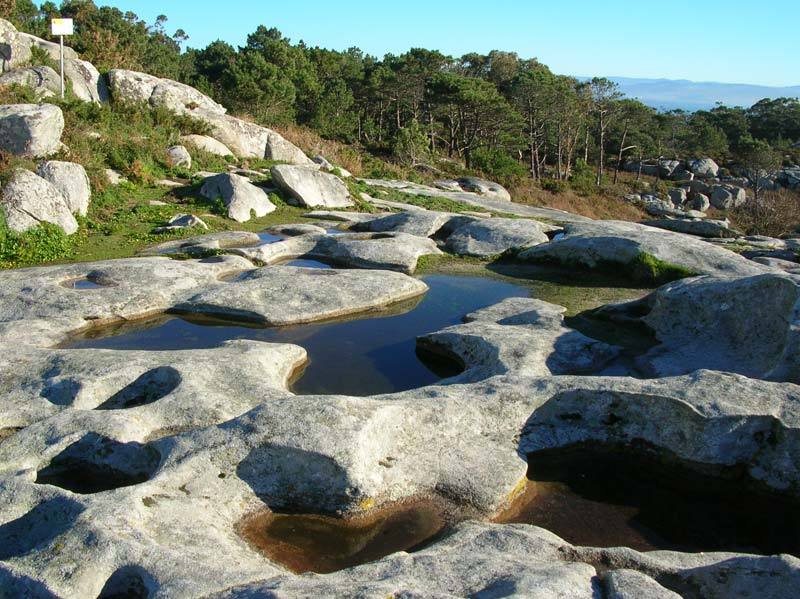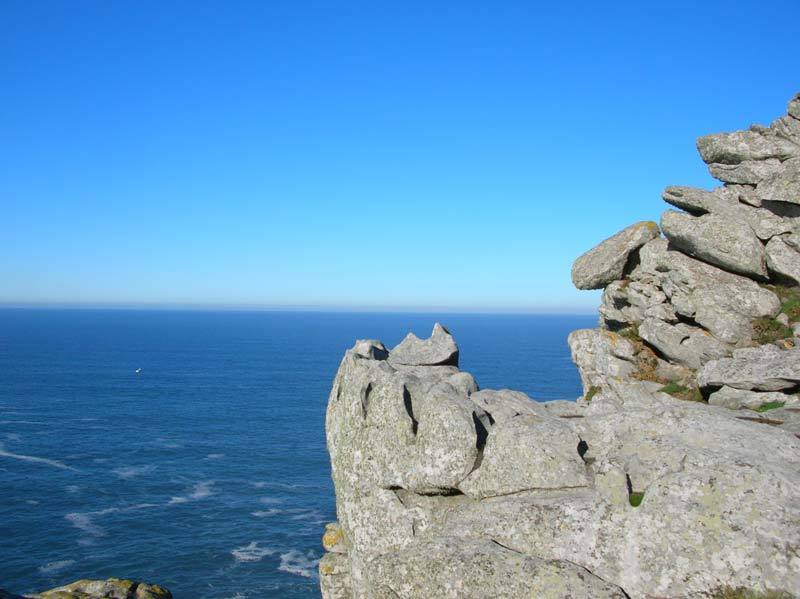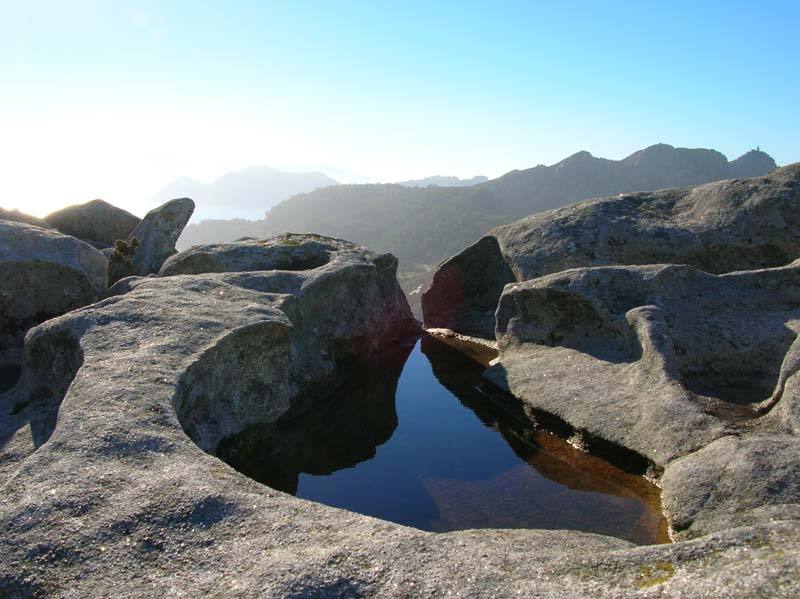The prince hill is characteristic because of the rock formations called pías. They are eroded rocks presenting holes. On the granite rocks of the high lands in Cíes we can find modelling marks which make peculiar shapes, resulting from the chemical action (transformation of minerals and formation of glass and salt)and the biological action (presence of lichen and moss). These variation tracks are later emphasized by the physical weathering in the the weakest point of the granite where the rainwater full of salt crystals is stored, as in the pías.
As time goes on, the chemical action dissolves the minerals creating the formations, which appear in the prince hill and in the bell hill (alto da campá), known as pías, alvéolos, or bee´s nests and the first ones taffonis or cacholas the second ones.
The pías or giant´s potholes are formed on horizontal surfaces as we can see from this point of the prince hill where there are many alvéolos or bee´s nests are produced in vertical surfaces, being called taffonis or cacholas when its evolution makes a cavity in the rock. We have an example of this phenomenon in another point, lighthouse island, bell hill (Alto da Campá).
This way the pías appear in horizontal surfaces and the alvéolos in vertical ones. The taffonis are amazing cavities made in the rock by the evolution of the alvéolos, drilling the rock.


